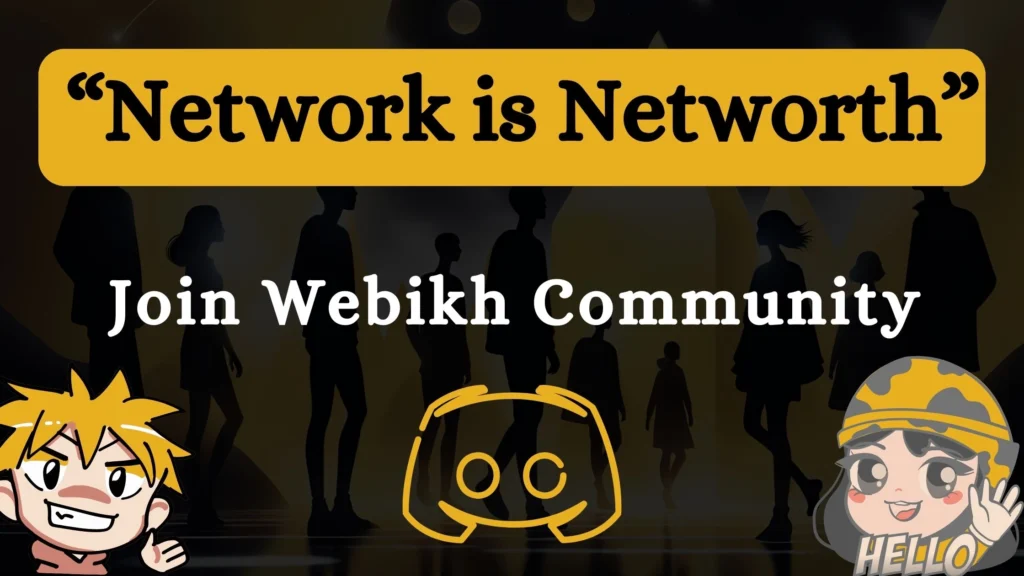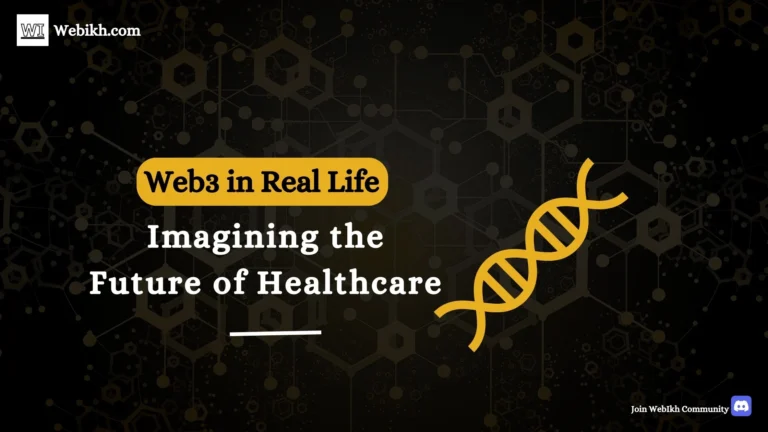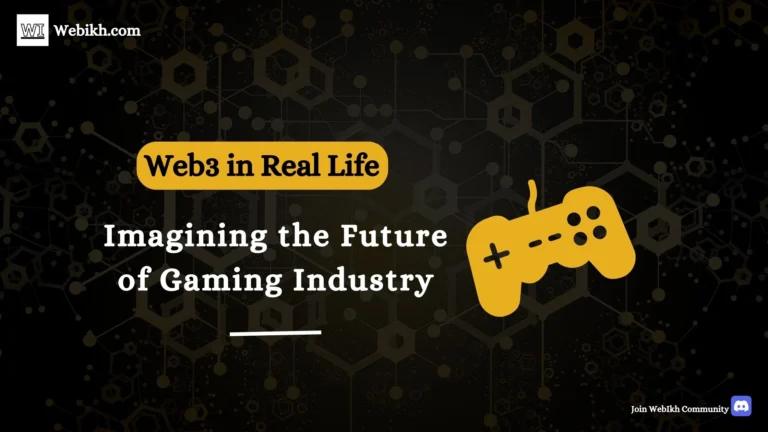What is Education’s future With Blockchain and AI in 2024?
Will web3 change the way we learn?
How does the future of Education will look like with blockchain?
Can technologies like Metaverse, Artificial Intelligence, Cryptocurrency and NFTs be used in Education and Learning ?
You must be having these questions right?
Let’s dive deeper in the world of web3 and see what it offers for your study notes ?
Let’s start with the problems the Education sector faces and how it can be tackled ?
Subscribe to Webikh Newsletter
The Only AI and Web3 Focused Newsletter
Subscribe & Download Freebies !
The Problem – Cracking the Academic Credential Conundrum
Imagine you’ve just finished a quest in your favorite video game.
You defeated the final boss, collected treasures, and unlocked new levels.
Now, you want to show off your achievements to others. But how can you prove that you actually accomplished all those feats?
In the real world, people face a similar challenge with their education.
They spend years studying, earning degrees, and acquiring skills, but there’s often no easy way to prove it.
Traditional academic credentials, like diplomas and transcripts, are often paper-based, easily lost, and sometimes even forged.
This creates a problem for students, job seekers, and employers alike:
Students: After years of hard work, students need a way to securely store and showcase their academic achievements. They want a system that’s convenient, reliable, and tamper-proof.
Job Seekers: When hunting for a job, job seekers want to impress employers with their qualifications. They need a quick and trustworthy way to share their academic records.
Employers: Employers need to verify the credentials of potential hires efficiently. Traditional verification processes can be time-consuming and costly.
In the world of education, solving this problem is like finding a magical item that grants you unlimited knowledge points.
But guess what? Web3, with the help of blockchain technology, is here to help!
The Solution
Just as blockchain helps adventurers secure their digital treasures, it can also secure academic credentials.
Blockchain, a digital ledger that records transactions securely and transparently, can be used to create a tamper-proof system for academic records.
Here’s how it works:
1. Digital Diplomas: Instead of receiving a paper diploma, students can get a digital diploma stored on a blockchain. This diploma is like a unique digital treasure chest that only the student can access.
2. Verified Transcripts: Academic transcripts, which list courses and grades, can also be stored on the blockchain. They are secure, transparent, and easily shareable.
3. Immutable Records: Once on the blockchain, academic records are tamper-proof. No one can alter or delete them without leaving a trace, making them highly reliable.
4. Instant Verification: Employers or institutions can quickly verify a candidate’s academic credentials by checking the blockchain. It’s as easy as confirming a gaming achievement.
Now, let’s explore how this solution will change the game in education.
How It Will Work?
Let’s dive into the mechanics of how blockchain will transform the way we handle academic credentials.
Digital Diplomas: When a student completes their studies, the university or school issues them a digital diploma on the blockchain. This diploma is a cryptographic token unique to the student. It’s like a special key to access their academic achievements.
Verified Transcripts: Alongside digital diplomas, academic transcripts are also added to the blockchain. These transcripts detail the courses taken and grades earned. They’re timestamped and unchangeable, providing a complete academic history.
Sharing Made Easy: Students can easily share their digital diplomas and transcripts with employers or other educational institutions. It’s as simple as sending a secure link or granting access through a blockchain-based app.
Instant Verification: Employers or institutions, when presented with a candidate’s academic credentials, can verify them instantly. No more waiting for transcripts to arrive in the mail or chasing down references.
Privacy and Control: Students have full control over who can access their academic records. They can grant or revoke access using smart contracts, which are like magic spells programmed into the blockchain.
The Impact – Unlocking a World of Educational Possibilities
The impact of using blockchain in education is like discovering an enchanted library full of endless knowledge.
Let’s see how this Web3 solution transforms the world of learning.
Academic Mobility: Imagine you’re a student who wants to transfer to a different university. With your academic records on the blockchain, this process becomes a breeze. The new university can instantly access your records, making it easier to continue your education journey.
Global Recognition: Your digital diploma is recognized not only by local institutions but also by universities and employers worldwide. This means your qualifications are universally accepted, opening doors to international opportunities.
Credential Transparency: Employers, institutions, and even other students can view your academic achievements transparently. No more doubts or guesswork about someone’s qualifications – it’s all on the blockchain.
Reduced Fraud: The blockchain’s tamper-proof nature means a significant reduction in diploma mills and fake credentials. Employers can trust that the qualifications they see are genuine.
Personalized Learning: AI-powered systems can analyze your academic history and preferences to suggest personalized learning paths. It’s like having a magical tutor who knows exactly what you need to succeed.
Immutable Records: Your academic history is forever preserved on the blockchain. Even if your old school’s records are lost or destroyed, your digital records remain intact.
Opportunities and Possibilities – Where Web3 Takes Education
Now that we’ve seen the impact, let’s explore the vast opportunities and possibilities that Web3 brings to education.
Decentralized Learning: Web3 enables decentralized learning platforms. Students from around the world can join virtual classrooms, sharing ideas and experiences.
Microcredentials: Instead of pursuing full degrees, you can earn microcredentials for completing specific courses. These are valuable in the job market and more flexible than traditional degrees.
Immersive Education: The Metaverse, a virtual reality world, can provide immersive educational experiences. Imagine studying history by walking through ancient civilizations or learning science by exploring outer space.
Global Collaboration: Students and researchers can collaborate globally, breaking down geographical barriers. Working on projects with peers from diverse backgrounds enriches the learning experience.
Transparent Research: Blockchain can revolutionize research by ensuring transparency and trustworthiness. Published research findings can be easily verified on the blockchain.
Risks and Challenges – Navigating the Web3 Educational Landscape
While Web3 offers incredible potential for education, there are challenges and risks to consider.
Digital Divide: Not everyone has access to the internet or digital devices, creating a digital divide. Ensuring equitable access to Web3 education is crucial.
Privacy Concerns: Storing academic records on the blockchain raises privacy concerns. Students must have control over who accesses their data.
Technical Hurdles: Implementing blockchain and AI in education requires technical expertise. Institutions need support in adopting these technologies.
Data Security: Safeguarding academic records from cyber threats is vital. Strong security measures are necessary to protect sensitive information.
Regulatory Frameworks: The education sector needs clear regulations regarding the use of blockchain and AI. Balancing innovation with student protection is a delicate task.
MUST READ :
What is Real Estate’s future With Blockchain, AI and Metaverse?
What is Retail’s future With Blockchain, AI and Metaverse?
What is Law’s future With Blockchain, AI and Smart Contracts?
What is Finance Sector’s future With Blockchain and AI?
Conclusion
Web3’s integration into education is like adding magical elements to traditional learning.
It offers secure and transparent academic credentials, personalized learning experiences, and a world of opportunities.
However, challenges like the digital divide and data security must be addressed to harness the full potential of this educational revolution.
So, are you ready to embark on this Web3-powered learning adventure? 🚀📚🌍

FAQ : AI & Blockchain for Education
Implement AI in EdTech for personalized learning, adaptive assessments, intelligent tutoring, and automating administrative tasks.
AI can augment teaching but not replace teachers, as human interaction, empathy, and mentorship remain vital in education.
What are the 4 ways blockchain will transform higher education?
Blockchain transforms higher education through secure credentialing, reducing fraud, enabling lifelong learning, and improving administrative efficiency.
Blockchain for education platforms like Learning Machine and Blockcerts provide a secure, verifiable way to issue, store, and share academic credentials.








I don’t think the title of your article matches the content lol. Just kidding, mainly because I had some doubts after reading the article.